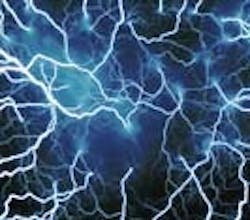Scientists Find New Energy Solution in Water
A team of scientists has discovered a unique way to make electricity from flowing water.
The breakthrough, the first new method of electricity production for 160 years, could provide free, clean energy for devices such as mobile phones and calculators.
On a large scale, it could conceivably be used to feed power into the national grid.
Dr. David Lynch, Dean of the Faculty of Engineering at the University of Alberta in Canada, where the technology was developed, said: "The discovery of an entirely new way of producing power is an incredible fundamental research breakthrough that occurs once in a lifetime."
A water powered mobile phone would contain a small reservoir pressurized by a hand pump.
Electricity is generated as the water is released and surges through an array of tiny microchannels.
The system relies on the natural "electrokinetic" effect of a fluid flowing over a solid surface.
An interplay of forces results in a thin layer of water – where it meets the surface – with a net electric charge.
This region is known as the Electric Double Layer (EDL). Normally it goes unnoticed, but the Alberta scientists found that forcing water through a channel with a diameter similar to the EDL produces a flowing current.
The amount of electricity generated by one microchannel is minute. But millions of parallel channels can produce enough power to operate electronic equipment such as a mobile phone.
Professor Larry Kostiuk, a thermodynamicist at the university, hit on the idea after a chance conversation with a fellow scientist about surface-interface phenomena.
Later, he and nanofabrication researcher Professor Daniel Kwok – the other party in the conversation – illuminated a real light bulb by passing water through a porous glass filter.
Their findings were published in the Journal of Micromechanics and Microengineering.
"This discovery has a huge number of possible applications. It could be a new alternative energy source to rival wind and solar power, although this would need huge bodies of water to work on a commercial scale," said Professor Kostiuk.
Source: Ananova Ltd.
